

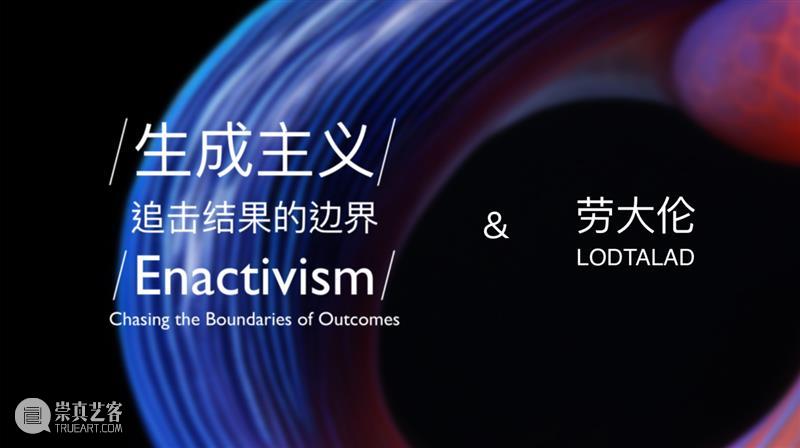

劳大伦的绘画是基于他对早期虚拟空间、图像的认知展开的。在计算机算力有限的时代里,为了保证游戏体验的流畅性,角色数字模型的分面数非常有限,光线、运动等算法也相对简单。它们笨拙、冰冷、硬边的外观本是折中、妥协的产物;而在今天,它被作为一种“古早”的趣味而保留了下来。作为国内数字美学最早的践行者,劳大伦采取了“挪用”的策略,将这些数字物转译为绘画;通过与背景生硬的断裂、模糊的“表皮”,试图再现数字物的存在状态。随着工作的深入和推进,劳大伦意识到自己的工作并非是效果层面的“模仿”,而是借由这一特殊的数字策略,发展出一种“元绘画”。他多数作品的尺幅都不算大,最惯常使用的工具是铅笔和纸张。铅笔的颗粒是构成劳大伦绘画的基本物质单位。沿着硬边让色调均匀地渐变,实际上就是让铅笔颗粒的堆积均匀减少或增加的过程。
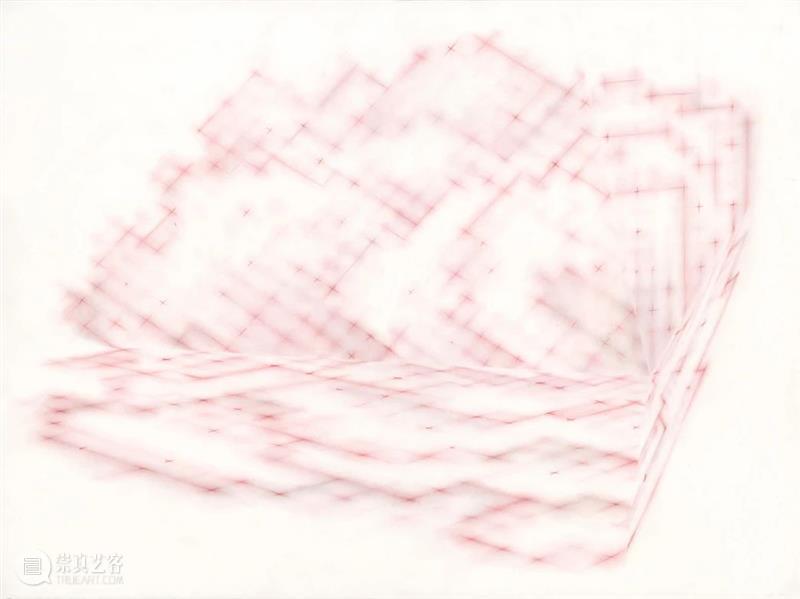
牡丹手稿 52×76.5cm 纸本铅笔 2020
在劳大伦的作品中,轮廓线让对象形成了一个封闭的结构,在对象与环境之间形成了一种绝对的阻断;而在这一封闭的轮廓之内,事物自身被“显现”出来:通过穿插、遮挡、体积和渐变。于是,在劳大伦的作品中似乎形成了一种绝对的二元性:主体和背景、存在与空无、坚硬与柔软。《蒙娜丽莎》原作展示了达·芬奇精妙的“渐隐法”(即让对象的轮廓线变得模糊,以便产生体积、空间的手法),而劳大伦有意选择了这个对象,将其置于自己的创作美学之中。这时,蒙娜丽莎的外轮廓变成了硬边的直线,而轮廓线内部则充满了细致的色调变化,使其看起来像精度不高的网络表情包;几何化的外形、内部色调的丰富变化,恰恰是劳大伦美学最具标志性的特征。而这个轮廓线在画面中的确立也构成了劳大伦工作中的基本结构。
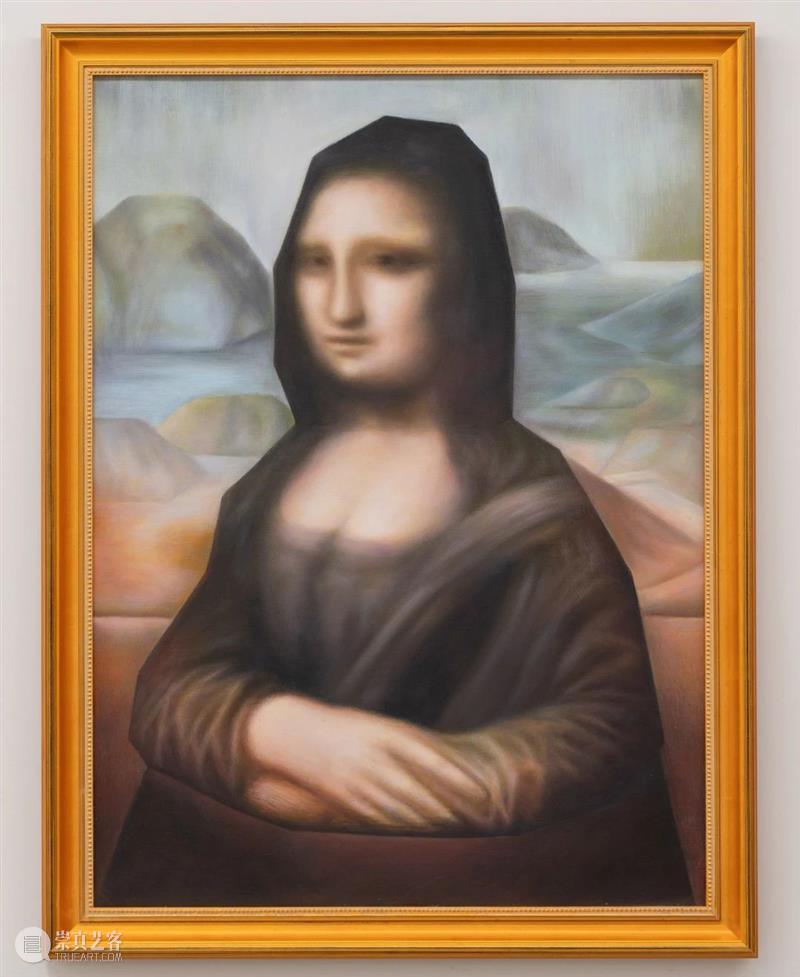
萌萝莉莎 86x63cm 布面油画 2021
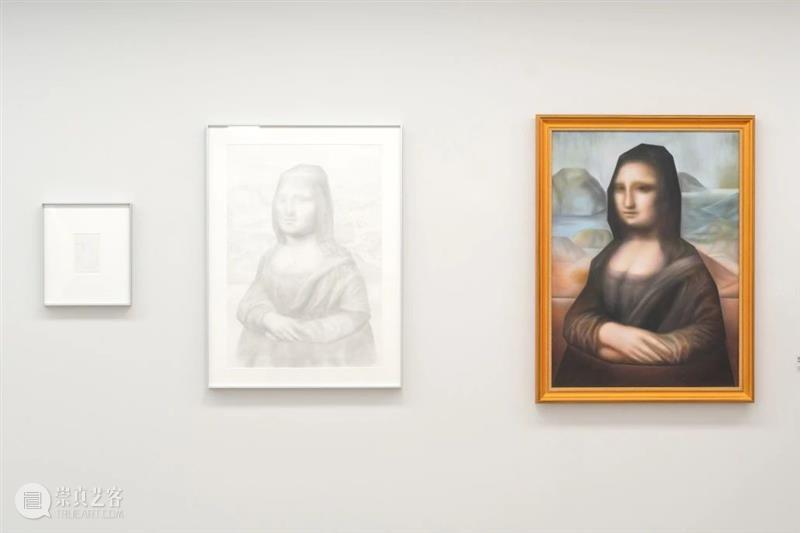
生成主义-追击结果的边界 劳大伦 展览现场
在劳大伦的绘画中所体现出来的生成性,更多的时候体现为一种模糊的技术无意识。想象一下,库布里克电影《2001漫游太空》中出现的那个神秘的黑方块。我们面对一张空白的纸,概括地画出事物的一条轮廓线,这个行动的过程跟打开三维建模软件,在空间中拉出一个面片或几何形体并没有什么区别。之所以说劳大伦的作品是一种“元绘画”,就是因为他绘画中展示出的那种笨拙和概括,就像是回到了技术刚刚出现的时刻,那种充满缺陷的状态。它产生的不是完美的配适和错觉,而毋宁说是一种粗暴的介入,根本无法完美的融入我们的日常。只有在这种肉体上的不适之中,形象才能从一种高清的幻觉语境中独立出来,让我们看到它实际的存在状态——我们才不仅看到了形象生成的结果,也同样意识到了生成的逻辑和过程。有了这种意识,“图像”和“绘画”才拉开了距离,产生了时间,产生了具身性。劳大伦的绘画并不是为了生产(某个特定领域的)图像,故而他绘画的题材才能延伸到家庭肖像、自然风物等领域。他画的牡丹花系列成为了另一个体现他工作中生成性的案例。这些花并不仅仅是一个数字化的尝试,而是一种对绘画中空间、朝向的探索,这种探索最终是为了展示一种情感和活力论,而数码空间,则为这种尝试提供了最为经济的借口。
撰文:雷鸣
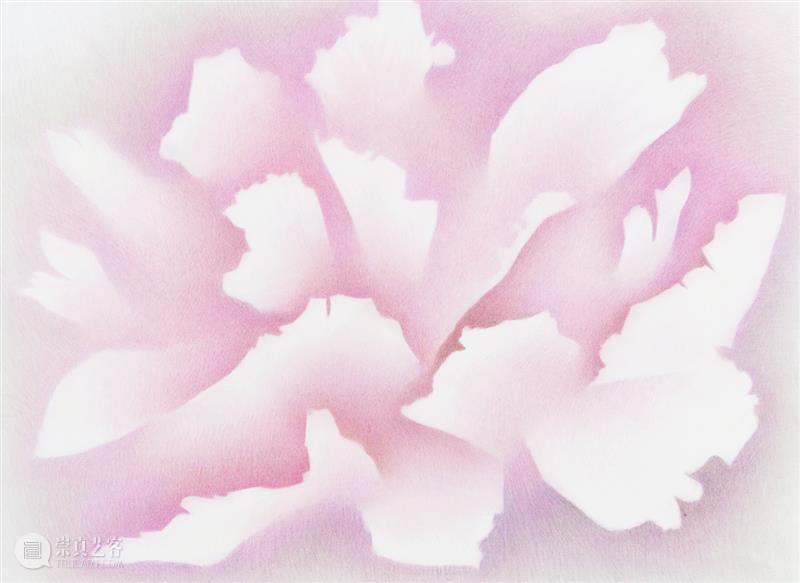
牡丹 63×85cm 纸本彩铅 2024

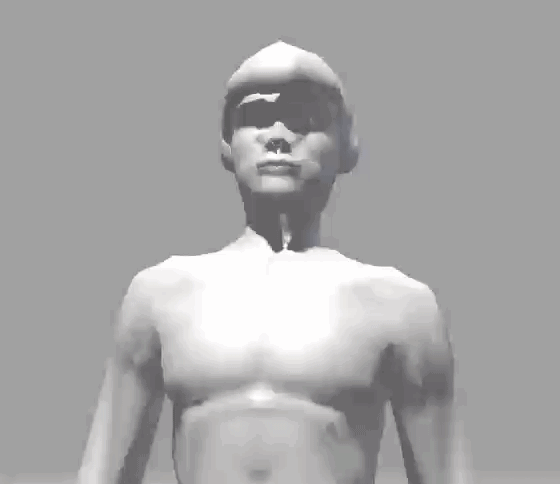
劳大伦(LODTALAD)是现实与虚拟交融后所得的现实身份,他在充满了偶然性的创世造物假定场景下,依靠自身逻辑开垦了一片想象的疆域,显像于绘画媒介,剥离出事物的基本要素,构建了他所面临的未知世界。“劳”所对应的“LOD”源自一类高效率的渲染运算方式。在LOD的基础图像为,内在图像在清晰的边缘下呈现相对模糊的状态。劳大伦创造了一系列可在此基础上演进的绘画元要素,形成了新的视觉造型意识,从而提炼出虚拟世界特有的美学。它们作为元语言,构建了一系列元图像,处理并关切着复杂的审美问题。劳家辉生于中国广东广州。毕业于中央美术学院版画系。现工作生活于北京、广州。
策划展览:“洛德世界2:敌友大会”(野松画廊,2022),“洛德世界:起航”(海涵艺术空间,2021)。
近年展览包括:“劳大伦:深入浮岛觅神仙”(站台中国,2024),“劳大伦:投入具身世界”(北京保税艺术区,2024),“Birth——劳大伦”(站台中国,2022),“肖像1洛德塔拉德” (fakeproject 2022),“劳大伦 LTLLL”(站台中国-dRoom,2021),“有个叫劳家辉的人开了个虚拟博物馆” (5art space,2019),“玩家的未来“ (C龙口空间,2018)。

Q=Click Ten gallery
A=劳大伦
Q:如何看待“生成”?是否认为自己的工作方式可以被归纳进 “生成主义”?
A:我运用多种创造的思维,更多还是看感觉走,会遇到某些作品会更有生成的方式。但单一某一种方式会形成一种标签,一旦单一了,我也觉得无趣了。
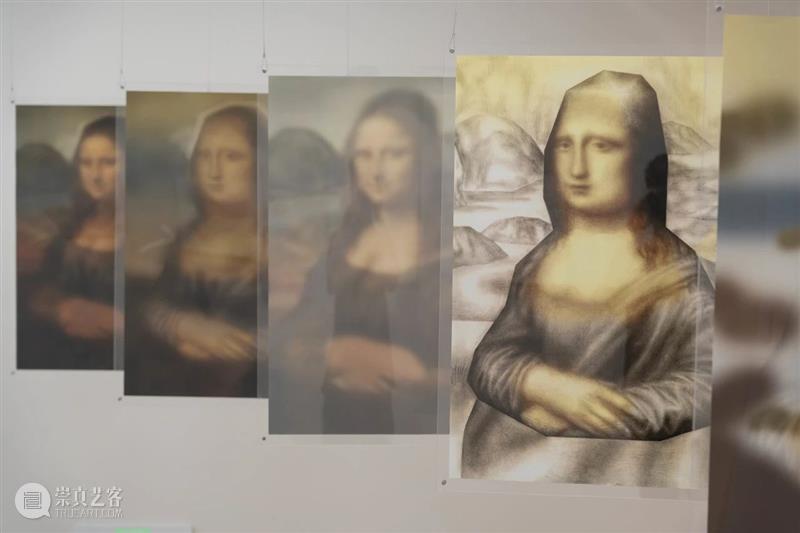
生成主义-追击结果的边界 劳大伦展览现场
Q:艺术家如何处理工作中产生的失败品或废品 。
A:可能没有所谓的失败品或废品的概念,也许是因为每一个创造都保存了当时的精神和努力。但当然创造的过程中由于自身会在预先在大脑中想象一个理想,我会希望作品能达到把初衷的完美表达出来。有些作品也许在初期创作时偏离这个理想,但却满足了不可预测的有趣,出现了新的价值和自身认为重要的意义,所以没有废品这个概念。
Q:艺术家如何看待工作的结果是什么。
A:材料的使用感受,画面中偶发的新鲜,都在过程中使得我获取更多方面的创造欲望,这些感知有时也许是偏离原初目的,也偏离大家对我作品的主要面貌的。那些作品便成为了更完整的我(劳家辉)的其他创作。
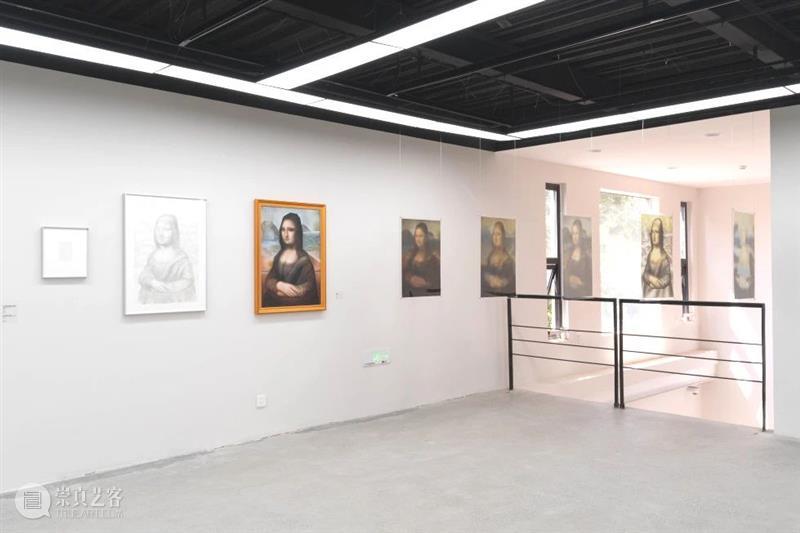
生成主义-追击结果的边界 劳大伦展览现场
Q:艺术家在工作中使用何种技术工具或物理工具。
A:各种技术只要使用了人的劳动和思维,我都认为它具有人类的精神。有些技术更表象,有些技术更隐晦。
Q:艺术家工作中使用的材料来源于哪里?
A: 来源于材料的特性,特点,可能性,以及自己对材料的熟悉程度和使用感受。这些部分又再一次激发我产生偏离开始原初目的的创作兴趣。
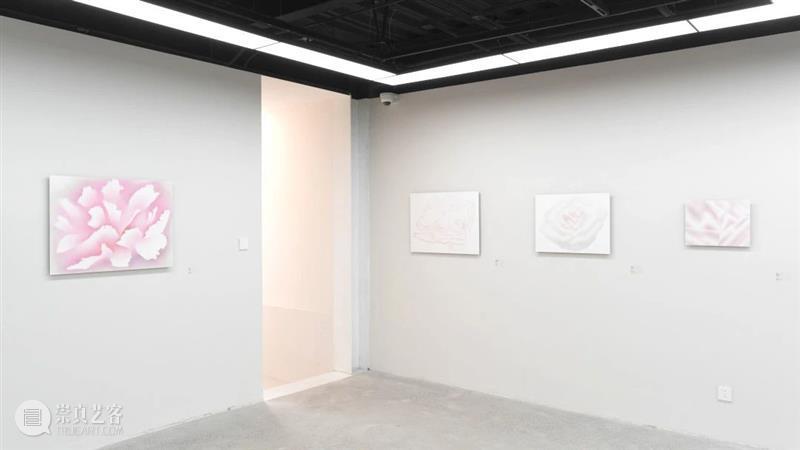
生成主义-追击结果的边界 劳大伦 展览现场
编辑:穆涵

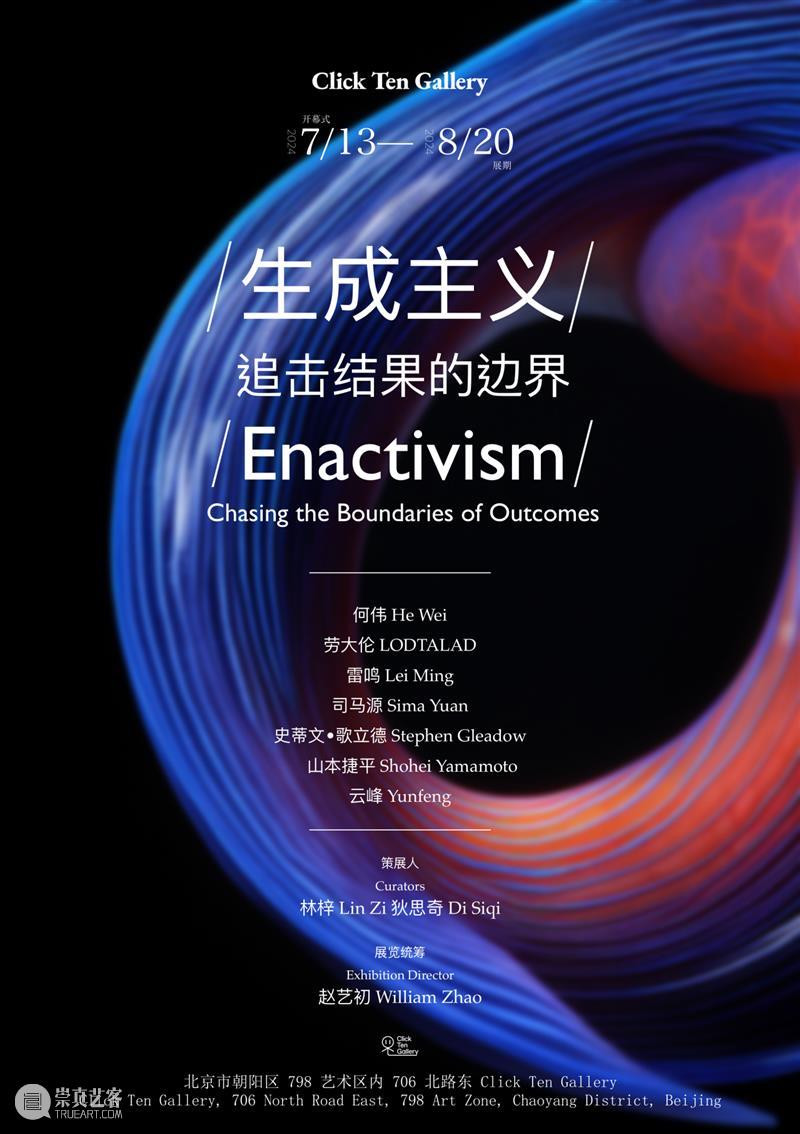
/ 生成主义 /
追击结果的边界
/ Enactivism /
Chasing the Boundaries of Outcomes
2024.7.13-2024.8.20
Click Ten Gallery
北京市朝阳区798艺术区内706北路东
706 North Road East, 798 Art Zone, Chaoyang District, Beijing


Click Ten Gallery 创立于2020年,位于北京798艺术区,是一家兼备艺术机构属性的商业画廊。我们致力于挖掘国内新一代艺术家的同时放眼全球,期望将国外优秀艺术家推广到中国。与此同时,我们也希望与艺术家、策展人、学者、收藏家紧密联络,通过实体空间和专业团队构建工作系统,共同探索中国当代艺术的多元未来。
Founded in 2020 in the 798 Art District, Beijing, Click Ten Gallery is a commercial gallery and art foundation. We focus on discovering a new generation of Chinese artists with a global vision and introducing outstanding international artists to China. We also hope to closely connect with artists, curators, scholars, and collectors, building a working system through a physical space and a professional team to explore the diverse future of contemporary Chinese art.
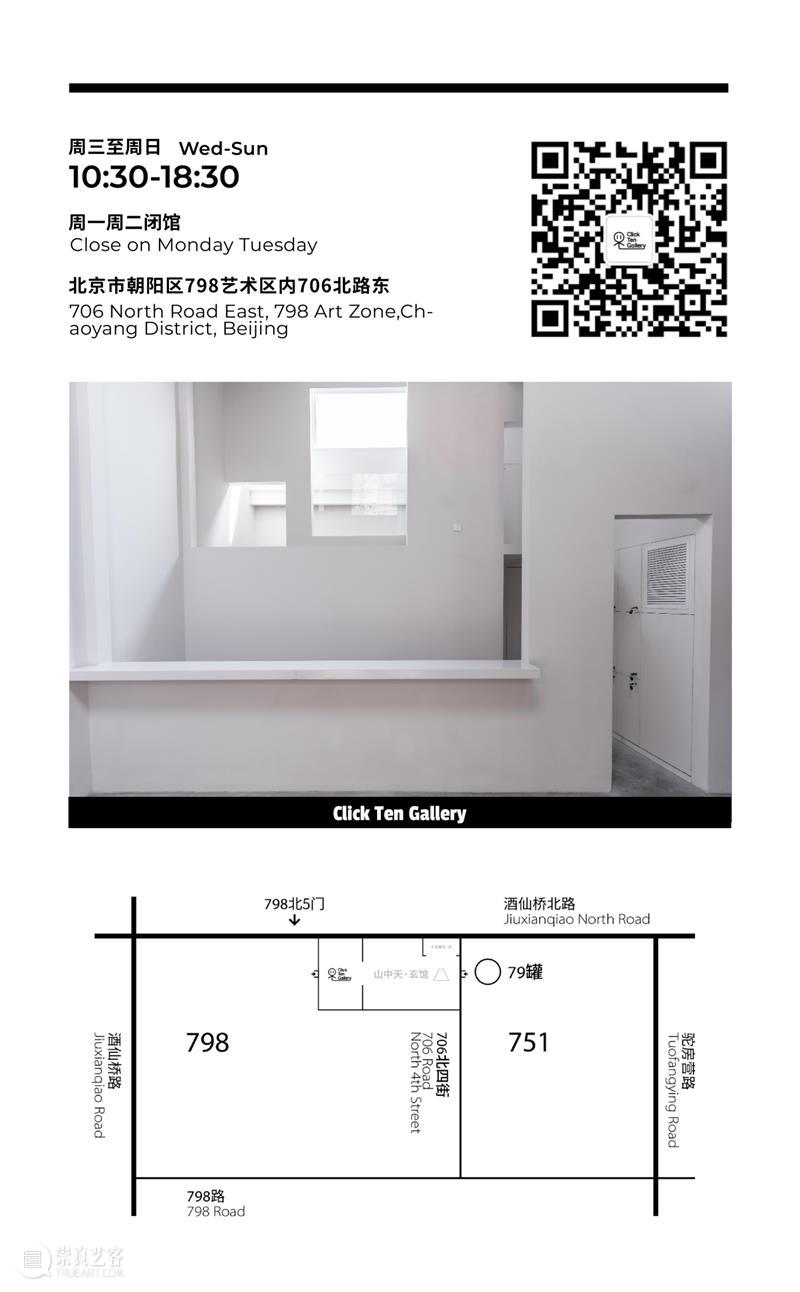


已展示全部
更多功能等你开启...





 分享
分享